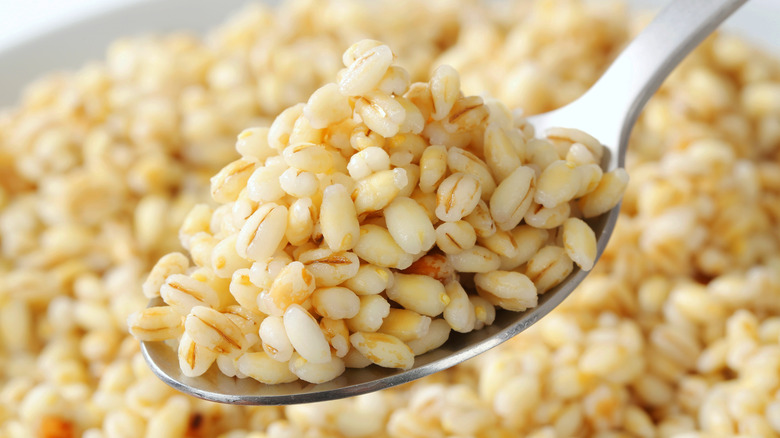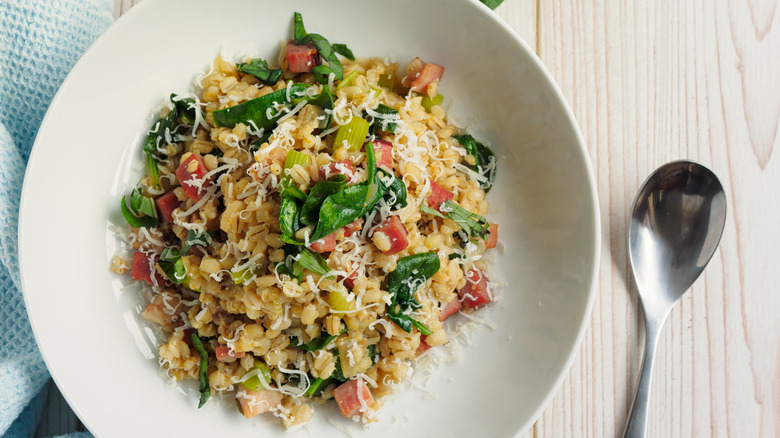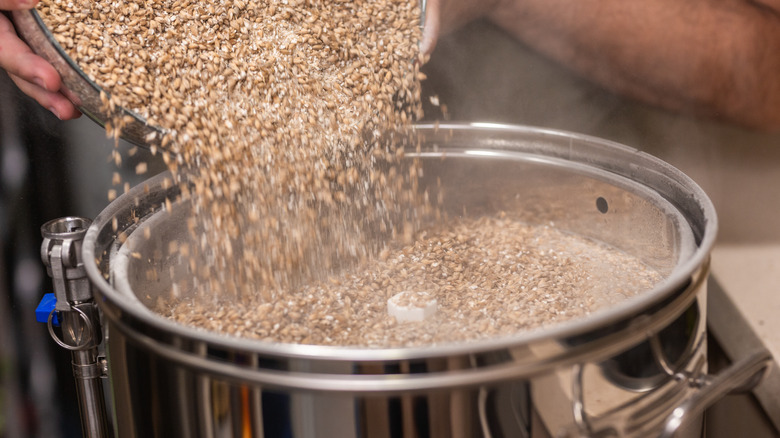The Proper Way To Cook Tender, Delicious Barley
Barley is one of those foods that has surprisingly different uses. It's a popular addition to soups, such as beef and barley soup, but it's also frequently used in making beer. And if you pick up a box of cereal from your grocery store shelf, there is a good chance you'll see barley listed in the ingredients — especially if the cereal is whole grain. While you can find barley in all of these store-bought products, it's actually pretty easy to prepare it on your own. And with so many health benefits, it's worth it to learn how to get tender, perfectly cooked barley — it starts with knowing which kind you're using.
The two forms of barley, hulled and pearl, have two different cooking times. Hulled barley is the whole-grain version of this grain, and, as a result, is chewier and takes longer to cook. Pearled barley is lighter in color, easier to chew, and cooks quickly because it's missing those heartier bran and endosperm layers.
How to cook hulled barley
If you're looking for the most nutrients from your barley, you should prepare the hulled version. Hulled barley is a whole grain because it includes all layers of the grain (the bran and endosperm), minus the outermost layer, which has to be removed in order for barley to be edible. With more layers, it has more fiber than the pearled version.
Barley cooks similarly to rice; all you need is water. To prepare barley, rinse it under cold water, then just add about 3 cups of water to a pot for every cup of barley you're cooking. From there, quickly bring the water and barley to a boil, then lower the heat once it starts to boil. This will allow the barley to cook at a simmer. Leave the hulled barley to cook for at least 40 minutes, though it could take up to one hour, depending on how tender you prefer it. The timing is important here because it determines how tender your barley becomes. The barley will expand quite a bit as it cooks, so make sure you use a large enough pot. Sample the barley to make sure it's soft enough to chew before removing it from the heat. The water should be fully absorbed by the time barley is done, but if it's not, you can drain it.
How to cook pearl barley
Pearl barley follows the exact same cooking process as hulled barley, but because it's missing its bran and endosperm layer, it cooks much more quickly. Use the same ratio of water to barley, and follow the same cooking instructions, but check the barley for doneness around 25 minutes. Keep in mind that since pearled barley has fewer layers than its hulled counterpart, you won't get as much fiber from this type of grain.
Barley makes a great addition to soups because it won't get too soggy as it sits in the broth. You can also use it as a substitute for rice because it is similar in size and texture. If you're not cooking for a crowd, prepare it as a single serving; in this case, the process remains the same, but shrink the ratio to ¾ cup of water and ¼ cup of barley. For an even richer flavor, you can also cook barley in any kind of broth or stock.


